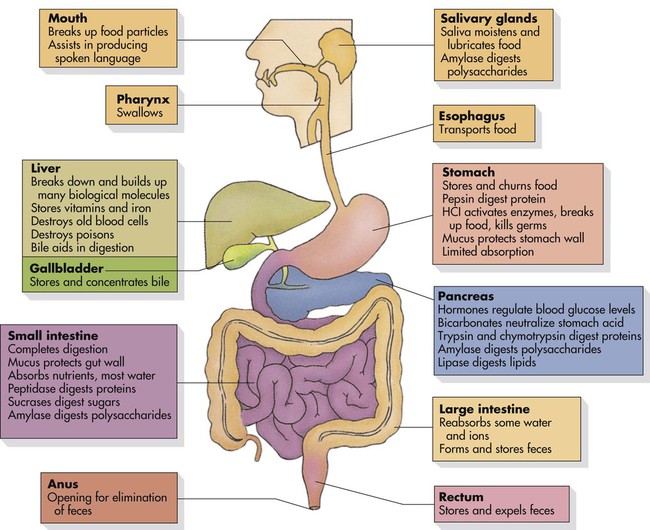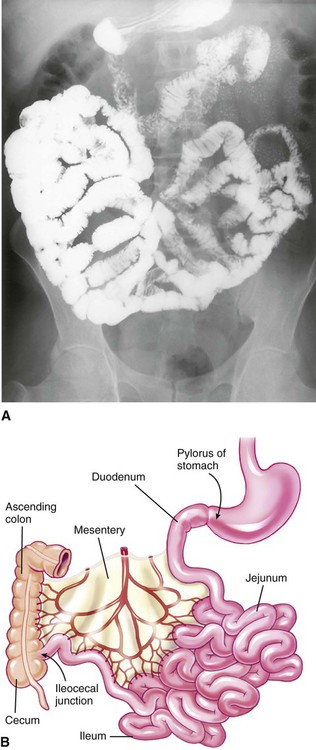Chapter 16 *A transition syllable or vowel may be added to or deleted from the word parts to make the combining form. The digestive system consists of the organs that make up the alimentary canal, or digestive tract, from the mouth to the anus (Fig. 16-1). The digestive tract is about 30 feet long. It is not a sterile system like the other internal organs because it is open to the outside environment at both ends. The main function of the digestive system, also called the gastrointestinal system, is to break down food to a form that can be used by body cells. The digestive process includes transportation of food and wastes, physical and chemical breakdown, absorption of digested food, and final elimination of wastes (Table 16-1). It also helps to maintain the proper amount of water, electrolytes, and other nutrients in the body. TABLE 16-1 As food is chewed it is mixed with saliva. Three salivary glands secrete an enzyme (amylase) that begins the chemical portion of the digestive process. An enzyme is a protein that increases the rate of a chemical activity in the body. The three salivary glands are the parotid, sublingual, and submandibular (Fig. 16-2). Amylase starts the transformation of starch to sugar. The portion of food mixed with saliva that is swallowed is called a bolus. From the stomach, the food enters the small intestine (Fig. 16-3). The small intestine is longer and narrower than the large intestine. It is lined with tiny threadlike projections of tissue called villi (singular, villus) that increase the area for absorption of nutrients. The three sections of the small intestine are the duodenum, jejunum, and ileum. The small intestine produces juices to aid the digestive process. Most absorption of digestive products occurs in the small intestine. When digestion is completed, carbohydrates have been reduced to sugar (monosaccharide and disaccharide). Protein has been changed to amino acid and dipeptide. Fats have been reduced to fatty acid and glyceride.
Digestive System
 Define at least 10 terms relating to the digestive system.
Define at least 10 terms relating to the digestive system.
 Describe the four functions of the digestive system.
Describe the four functions of the digestive system.
 Identify at least 10 digestive system structures and the function of each.
Identify at least 10 digestive system structures and the function of each.
 Identify the location and function of three accessory organs of the digestive system.
Identify the location and function of three accessory organs of the digestive system.
 Identify at least three methods of assessment of the digestive system.
Identify at least three methods of assessment of the digestive system.
Term
Definition
Prefix
Root
Suffix
Appendectomy
Removal of the appendix
append
ectomy
Cholecystectomy
Removal of the gallbladder
chole
cyst
ectomy
Colocentesis
Surgical puncture into the colon
colo
centesis
Enteritis
Inflammation of the intestines
enter
itis
Hematemesis
Vomiting of blood
hemat
emesis
Hepatitis
Inflammation of the liver
hepat
itis
Laparotomy
Incision into the abdomen
lapar
otomy
Peptic
Pertaining to digestion
pept
ic
Proctoscopy
Examination of the rectum
proct/o
scopy
Visceral
Pertaining to the organs
viscer
al
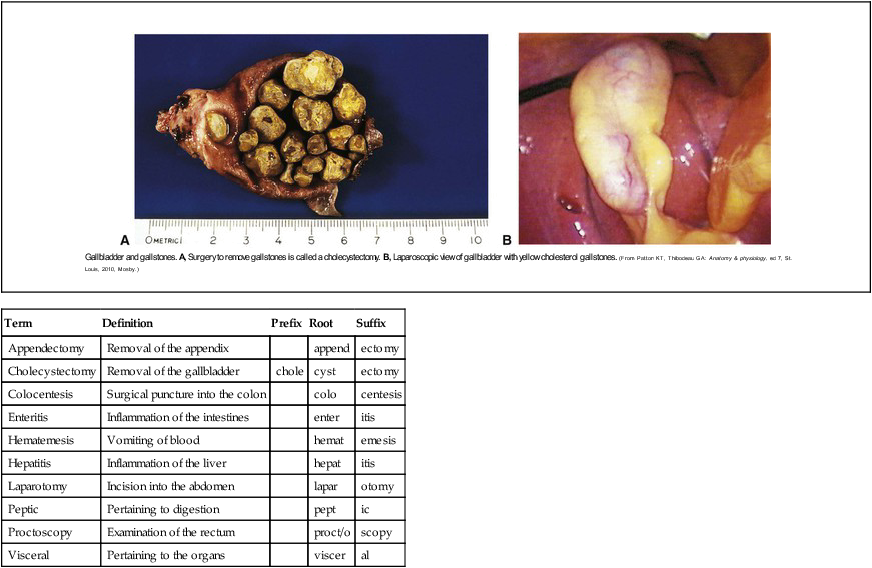
Structure and Function of the Digestive System
Organ
Size
Time for Food Passage
Enzymes Produced
Digestive Process
Mouth (salivary glands)
10-20 s (voluntary control)
Salivary amylase
Turn starch to glucose
Mucus*
Lubricate
Pharynx
Mucus*
Lubricate
Esophagus
10-12 in (25-30 cm)
5-8 s
Mucus*
Lubricate
Stomach
1-4 h
Lipase
Digest fat
Gastrin*
Stimulate hydrochloric acid
Pepsinogen
Break down proteins
Hydrochloric acid*
Dissolve minerals, kill bacteria
Mucus*
Lubricate chyme, protect stomach lining
Pancreas
Pancreatin, trypsin
Break down protein
Lipase
Break down fat
Amylase, maltase
Break down starch
Liver
3 lb (1.4 kg)
Bile*
Break down fat
Small intestine
3-5 h
Sucrase, maltase
Break down sugar
Duodenum
10 in (25 cm)
Lactase
Break down lactose
Jejunum
8 ft (2.4 m)
Lipase
Break down fat
Ileum
12 ft (3.6 m)
Large intestine
5 ft (1.5 m)
8-24 h
Mucus*
Lubricate
Appendix
3 in (7.5 cm)
Function unknown
Rectum
5 in (12.5 cm)
Voluntary control
Mucus*
Lubricate
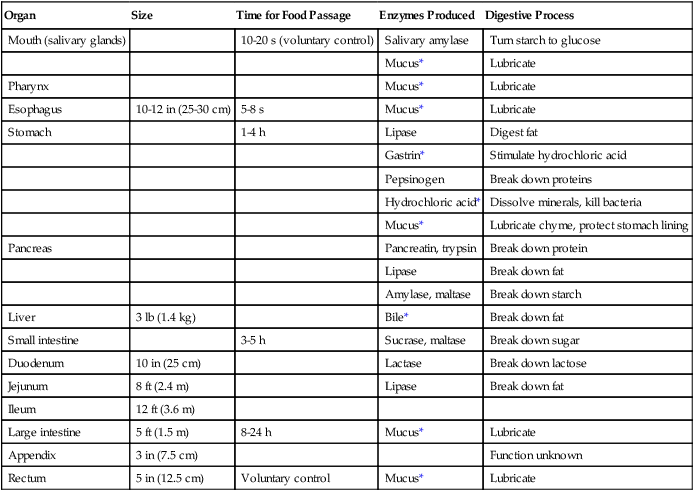
Organs of the Digestive Process
Mouth
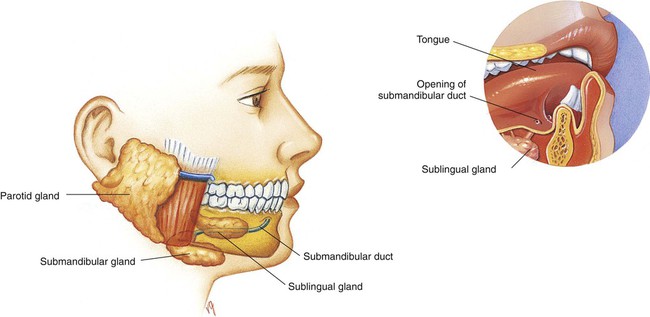
Small Intestine
![]()
Stay updated, free articles. Join our Telegram channel

Full access? Get Clinical Tree


Digestive System



